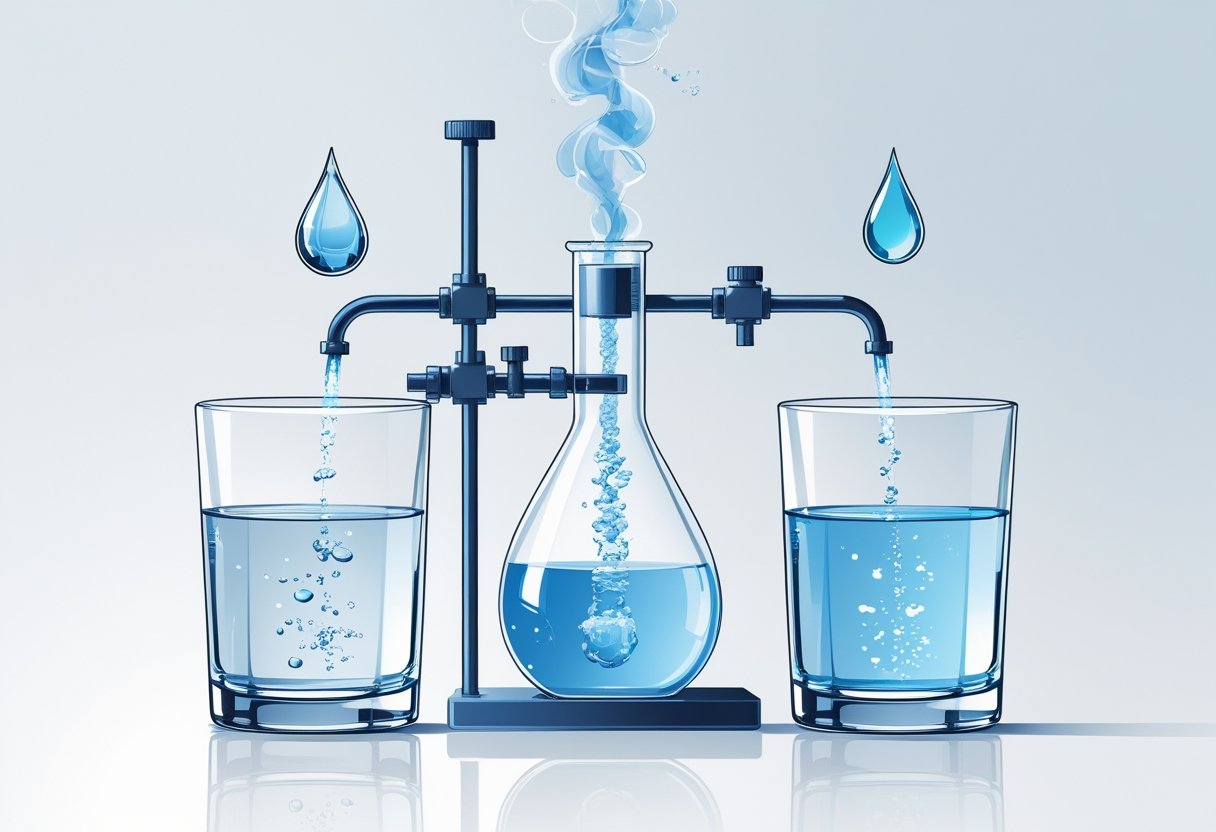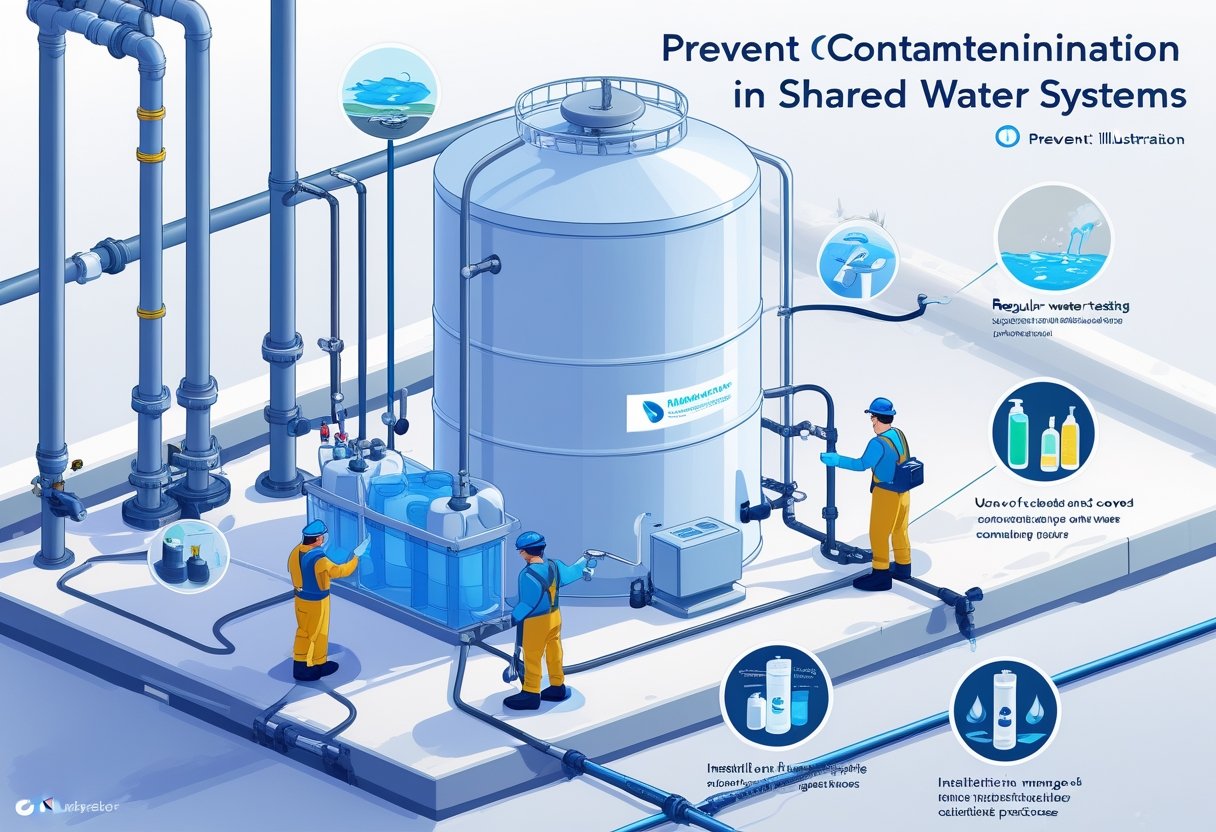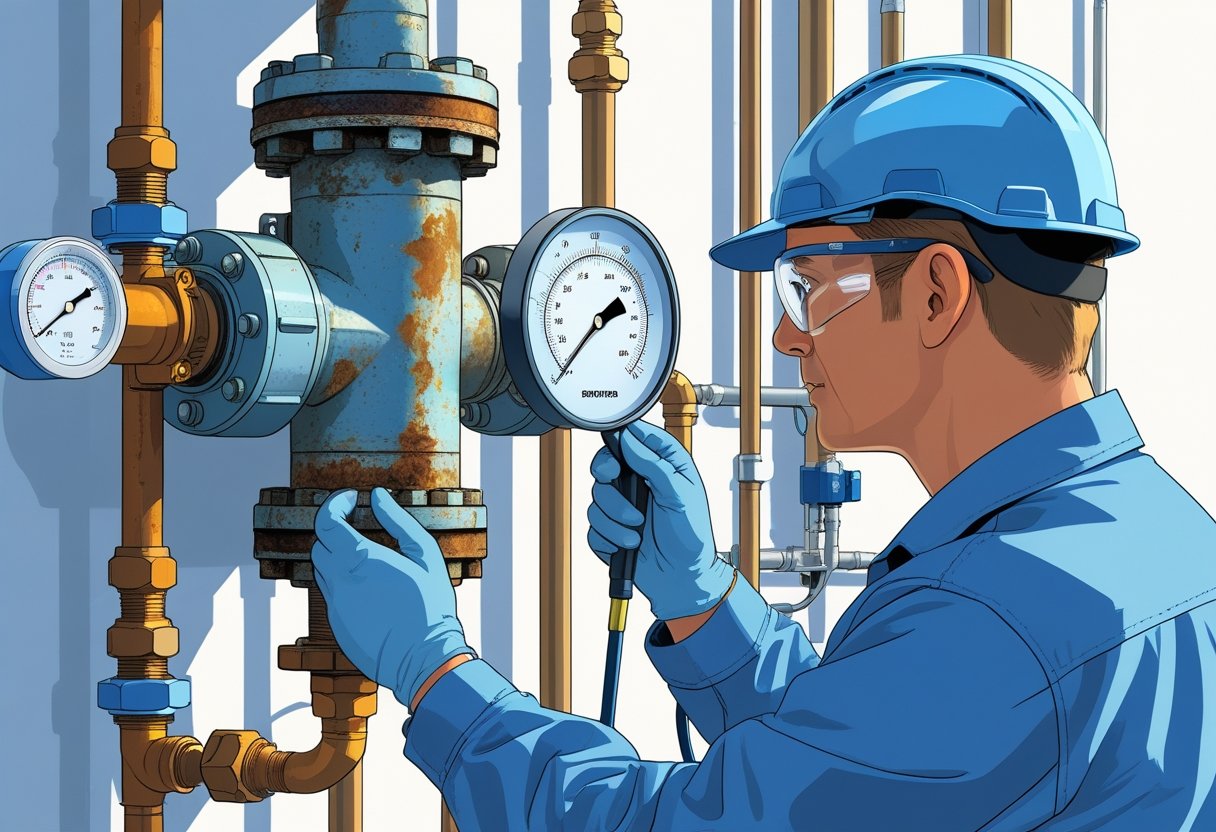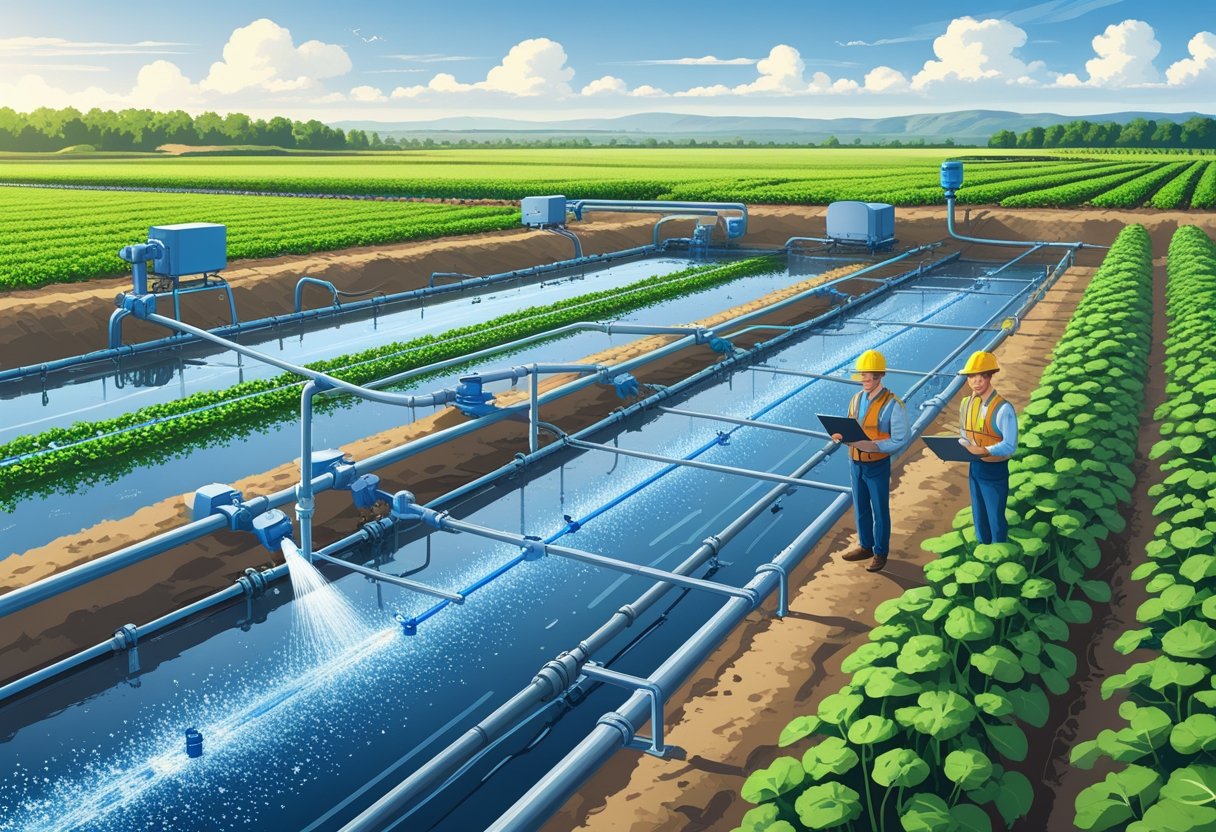Is tap water distilled? This question often arises when considering the best options for drinking water. Tap water is not distilled water; rather, it typically undergoes a different treatment process that includes local procurement and purification to meet safety standards. Understanding this distinction can influence your choices for hydration and overall health.
While both tap water and distilled water serve the purpose of providing hydration, they differ significantly in their composition. Tap water contains various minerals that may benefit your health, while distilled water is devoid of these minerals due to its purification process. For residents in San Diego County, ensuring the quality of your tap water is crucial, and services like those offered by Pacific Backflow play an essential role in protecting the water supply.
If you're curious about the differences between these water types and how they can impact your health and daily life, exploring this topic further can provide valuable insights. Your choices in drinking water can affect both your well-being and your home’s plumbing system.
Is Tap Water Distilled?
Understanding the distinction between tap water and distilled water is essential for making informed choices about your drinking supply. Each type serves different purposes and has unique purification processes that affect their quality.
Definition and Purification Processes
Tap water is sourced from local water supplies such as rivers, lakes, or groundwater. It undergoes treatment by municipal water systems to remove contaminants, ensuring it is safe for consumption. The processes can include filtration, sedimentation, and chemical treatment.
Distilled water, in contrast, is produced by boiling water, collecting the steam, and allowing it to condense back into liquid form. This process eliminates impurities and minerals, resulting in what is often referred to as pure water. Distilled water is commonly used in laboratories and medical applications due to its high level of purity.
Major Differences in Purity
The purity of tap water varies significantly depending on local regulations and the source. While it is treated to meet safety standards, it may still contain trace minerals and contaminants, influenced by old pipes or local pollution. Regulatory bodies closely monitor water quality to ensure it is safe for drinking.
On the other hand, distilled water is essentially devoid of minerals and contaminants. This lack of minerals means it does not have the same taste profile as tap water. Although distilled water may be ideal for specific uses where purity is critical, it is not necessarily better for daily consumption, as natural minerals found in tap water can be beneficial for health.
Summary of Key Distinctions
Tap Water:
- Sourced from local water bodies
- Treated but may contain impurities
- Regulated for safety
Distilled Water:
- Produced through boiling and condensation
- Contains no minerals or contaminants
- Used mainly for specific applications
If you're located in San Diego County and interested in maintaining water quality, consider reaching out to Pacific Backflow for reliable backflow testing. They have been serving the community for nearly half a century, ensuring that your water supply remains protected and compliant with regulations.
How Tap Water and Distilled Water Are Produced
Understanding the production methods of tap water and distilled water reveals key differences in their quality and usability. Each type has distinct processes that impact their composition and suitability for consumption.
Source of Tap Water
Tap water is typically sourced from local water bodies, such as rivers, lakes, or underground aquifers. Municipal water systems gather this water and distribute it for public use.
Water quality can vary based on several factors, including the source and the surrounding environment. Treatment processes are essential to ensure that tap water meets safety standards for drinking.
In many cases, tap water contains naturally occurring minerals, which can enhance its taste and nutritional value. These include essential elements like calcium and magnesium.
Distillation Method Explained
Distilled water is produced through a process known as distillation, which involves boiling water to create steam. The steam is then cooled and condensed back into a liquid, leaving impurities and minerals behind.
This method results in highly purified water, free from contaminants such as bacteria, chlorine, and heavy metals. The absence of minerals in distilled water means it can be beneficial for specific applications, such as laboratory use or steam irons.
While distilled water is safe to drink, its lack of minerals makes it less appealing for everyday consumption compared to tap water.
Treatment and Filtration Processes
To make tap water safe, extensive treatment and filtration processes are utilized. Municipal facilities employ techniques such as chlorination, filtration, and sedimentation.
These processes target harmful substances, providing safe drinking water that meets health regulations. Regular testing ensures compliance and maintains water quality in your community.
If you have concerns about backflow or contamination in your water supply, consider reaching out to Pacific Backflow. They offer reliable testing and maintenance services to protect your water supply in San Diego County.
Mineral Content and Health Implications
Mineral content plays a significant role in your hydration and overall health. Understanding the differences between the minerals found in tap water and the absence of minerals in distilled water is crucial. Here, the impact of mineral content on hydration and diet will be explored.
Minerals in Tap Water
Tap water often contains essential minerals such as calcium, magnesium, sodium, and potassium. These minerals are vital for numerous bodily functions, including muscle contraction, nerve transmission, and maintaining bone health. The specific mineral content can vary depending on your location and the source of the water supply.
In San Diego County, for instance, tap water is generally treated but still retains beneficial minerals essential for health. This makes it a convenient option for hydration without needing supplements. Regular consumption of tap water allows you to take in these important nutrients naturally.
Absence of Minerals in Distilled Water
Distilled water undergoes a purification process that removes impurities and minerals. While this process creates very pure water, it also means that distilled water is entirely devoid of essential minerals like calcium and magnesium. Drinking distilled water may be necessary for certain medical situations, but relying solely on it can lead to mineral deficiencies over time.
Numerous studies suggest that low-mineral water consumption might raise the risk of various health issues, including cardiovascular complications. It's important to be mindful of your overall intake of minerals if you predominantly consume distilled water.
Role of Mineral Content in Hydration
Mineral content contributes not just to hydration but also to electrolyte balance, which is essential for maintaining optimal physical performance. Electrolytes help regulate hydration levels, muscle function, and acid-base balance in your body.
When you drink water that is rich in minerals, you support these bodily functions. In contrast, drinking water that lacks minerals, such as distilled water, may not aid in maintaining these essential balances as effectively. Therefore, choosing a hydration source that provides minerals can be beneficial for your health and well-being.
Balanced Diet and Mineral Intake
A balanced diet is critical for ensuring you receive the necessary minerals for your body to function properly. Hydration should complement your nutritional intake, not replace it. This means food and drink should work together to meet your body's mineral requirements.
Foods like leafy greens, nuts, seeds, and dairy are good sources of minerals that can support your hydration needs. If you primarily drink distilled water, consider incorporating these foods into your diet to balance your mineral intake effectively. Focusing on whole foods will help you maintain optimum health and hydration alongside your water choices.
For residents of San Diego County, considering reliable services like those from Pacific Backflow can help ensure that your tap water is safe and beneficial to drink, contributing positively to your overall hydration and mineral intake.
Uses of Distilled Water and Tap Water
Both distilled water and tap water serve distinct purposes for hydration, medical applications, and household needs. Understanding their uses will help you choose the right type for each situation.
Drinking and Everyday Hydration
Tap water is commonly used for drinking and hydration purposes. It is sourced from local reservoirs and treated to meet safety standards. Many municipalities test their water regularly, making it a convenient option for daily use.
Distilled water, on the other hand, is created through steam distillation, which removes impurities and minerals. While it's safe to drink, it lacks the minerals found in tap water. Some people prefer distilled water for its purity, especially when used in water filters or specific dietary needs.
Applications in Medical and Laboratory Settings
In medical and laboratory environments, purified water quality is crucial. Distilled water's absence of contaminants makes it ideal for procedures requiring sterile conditions. It's often used to prepare medications, rinse instruments, and conduct tests.
Tap water may be unsuitable for these contexts due to potential impurities and minerals that can interfere with experiments. Hospitals and research facilities prioritize distilled water to ensure accuracy and safety in their work.
Distilled Water in Car Batteries and Appliances
Distilled water is essential for maintaining car batteries, particularly in lead-acid models. Using tap water can introduce minerals that lead to sediment build-up and damage battery components. By using distilled water, you help prolong battery life and maintain performance.
In appliances such as steam irons, humidifiers, and aquariums, distilled water prevents mineral build-up. This is crucial for appliances that rely on pure water to function optimally. Using tap water can result in reduced efficiency and increased maintenance.
Other Household and Industrial Uses
Tap water is suitable for cooking, cleaning, and general household use. It serves as an affordable and efficient resource for tasks ranging from washing vegetables to filling up a swimming pool.
For industrial applications, distilled water is often used in processes that require high purity levels. This includes manufacturing, cooling systems, and even food processing. Distilled water can enhance product quality by preventing contamination and improving consistency.
For any backflow testing or water safety requirements in San Diego County, consider reaching out to Pacific Backflow for reliable and responsive service. Their expertise ensures your water supply remains protected and compliant with local regulations.
Taste, Odor, and Sensory Differences
The taste, odor, and sensory qualities of tap and distilled water are key differentiators. You’ll notice variations in flavor and scent based on composition, regional influences, and purification methods. Understanding these aspects can inform your preference and selection for daily hydration.
Taste Profile of Tap Water
Tap water typically has a distinctive taste influenced by its mineral content and treatment processes. The presence of minerals like calcium, magnesium, and chlorine can impart different flavors. Some individuals describe tap water as having a slightly metallic or earthy taste, depending on its source and local water quality.
Various municipalities treat their water differently, which can lead to inconsistencies in flavor. For example, in some regions, tap water may have a chlorine taste due to disinfection processes used to ensure safety. Regular testing by services such as Pacific Backflow can help maintain water quality standards in your area.
Neutral Taste of Distilled Water
Distilled water, on the other hand, boasts a neutral taste due to its purification process, which removes impurities and minerals. This lack of dissolved substances leads many to describe its flavor as flat or bland. It essentially offers a clean and clear hydration experience without any additional flavor profiles.
While some people may prefer the distinct taste of tap water for its mineral content, distilled water serves as an excellent alternative. It's ideal for situations requiring purity, such as in appliances like steam irons, where mineral buildup from tap water can cause issues.
Odor and Regional Variations
Odors in tap water can vary significantly depending on geographic location and treatment methods. Some areas may have a noticeable chlorine smell, linked to water purification methods. In contrast, others might experience odors from natural sources, such as sulfur or organic materials, especially if the water comes from wells or rivers.
Distilled water usually has a very minimal odor, primarily because the distillation process eliminates compounds that create smells. Since odor can affect your perception of taste, the cleaner profile of distilled water may be appealing if you’re sensitive to tastes linked with tap water. Understanding these regional differences allows you to make more informed choices about your drinking water.
Frequently Asked Questions
In this section, you will find answers to common queries about distilled water, tap water, and related topics. Each question addresses specific aspects you may want to understand better.
How do I know if my water is distilled?
To determine if your water is distilled, check if it is labeled as such. Distilled water contains no impurities, minerals, or contaminants. You can also use a total dissolved solids (TDS) meter, which measures the concentration of dissolved substances. Distilled water will show a very low TDS reading.
How can tap water be converted into distilled water?
You can convert tap water into distilled water by boiling it and capturing the steam. As the water boils, impurities and minerals are left behind. The steam can be condensed back into liquid form, resulting in distilled water. A home distillation unit or a DIY setup can facilitate this process.
What is the difference between sink water and distilled water?
Sink water, or tap water, contains various minerals and may have impurities, depending on the local water supply. Distilled water is purified through a boiling and condensation process, making it free of contaminants. The difference lies mainly in mineral content and purity.
Where can I obtain distilled water?
Distilled water is widely available at grocery stores, pharmacies, and online retailers. It's also possible to purchase home distillation units if you prefer making it yourself. Consider checking specific local suppliers for accessible options near you.
What are the distinctions between purified and distilled water?
Purified water refers to water that has undergone filtration or treatment to remove impurities, which can include various processes. Distilled water is a specific type of purified water that is created through boiling and condensation. Both are clean but differ in the methods used for purification.
Does bottled water undergo a distillation process?
Not all bottled water undergoes distillation. Bottled water can be sourced from springs, wells, or municipal supplies, and may be filtered or treated through various methods. If you're interested in distilled bottled water, check the label to confirm the treatment process used.











